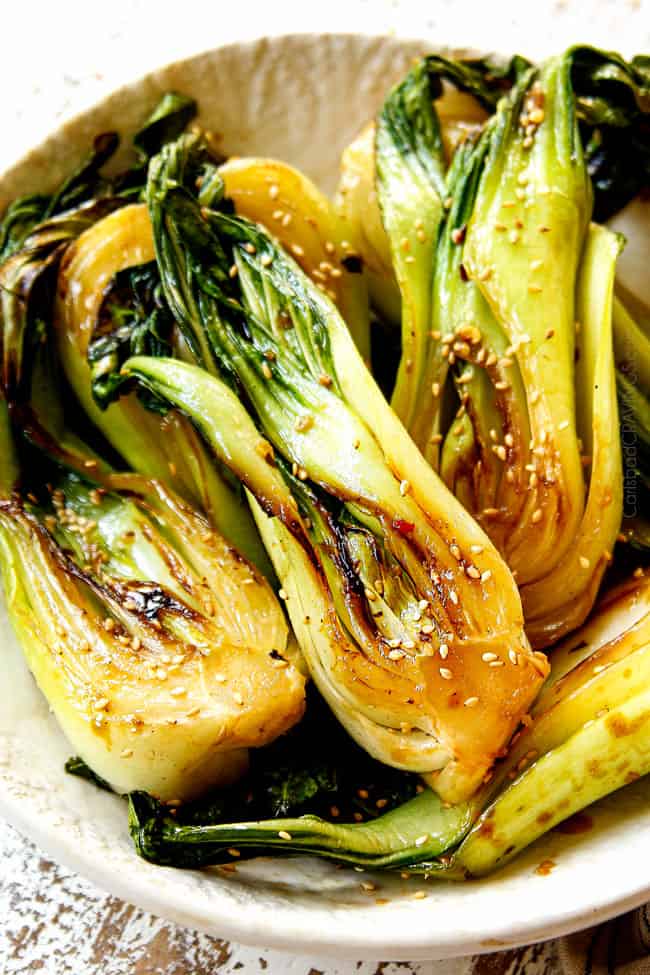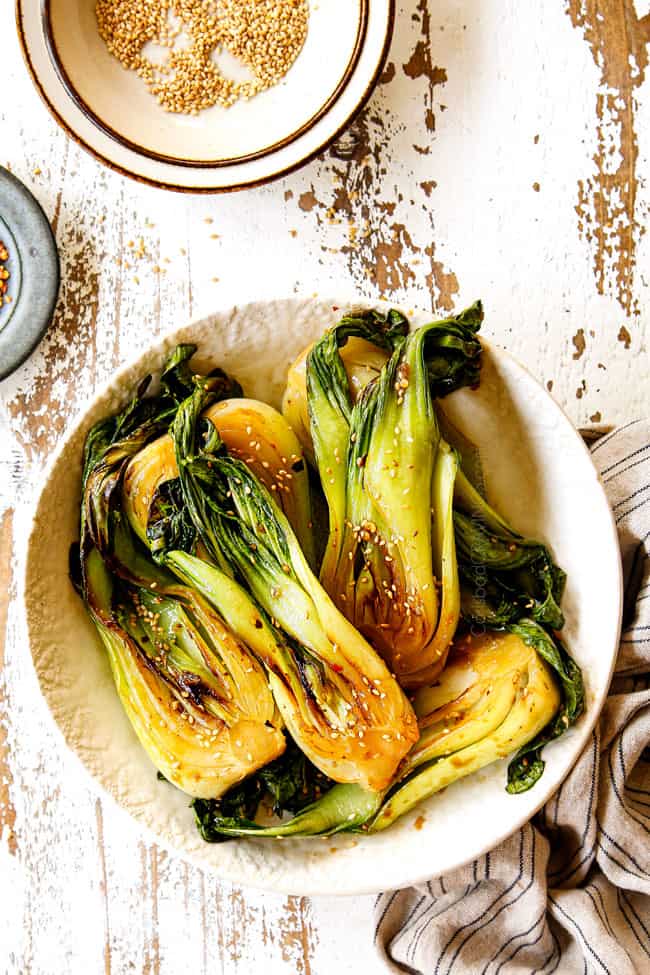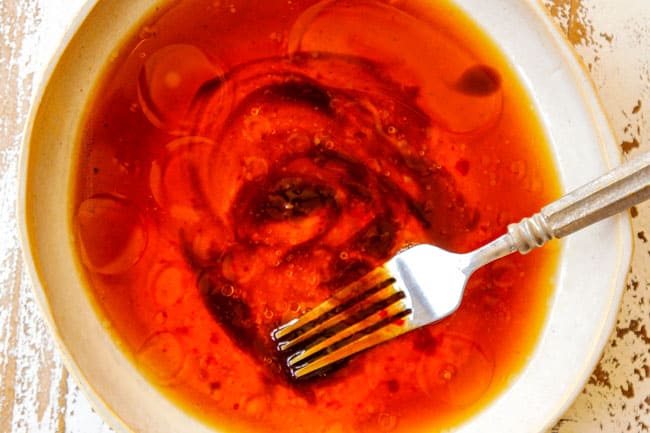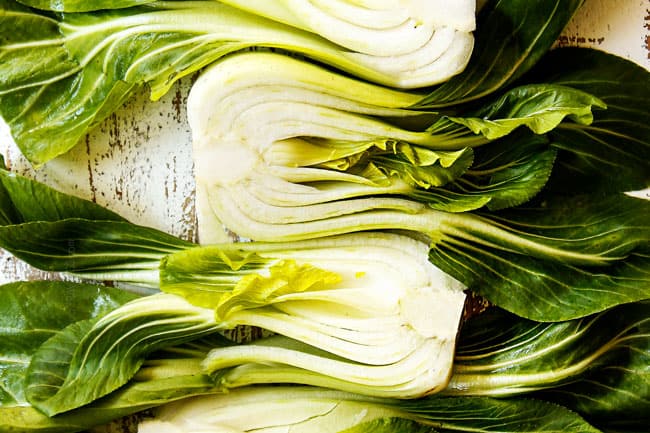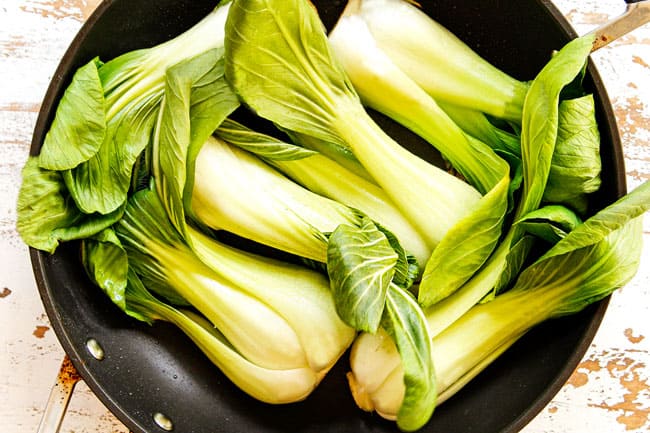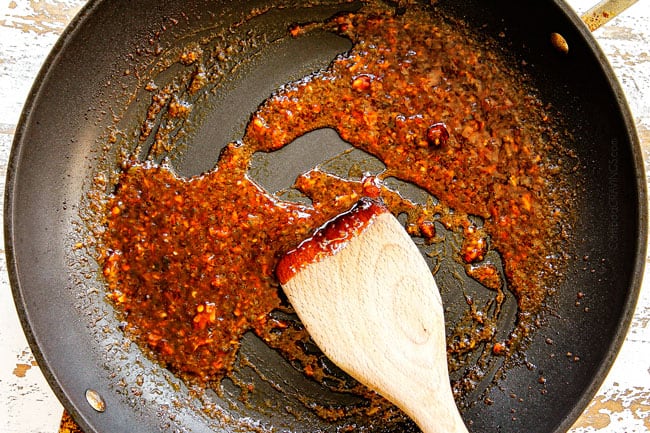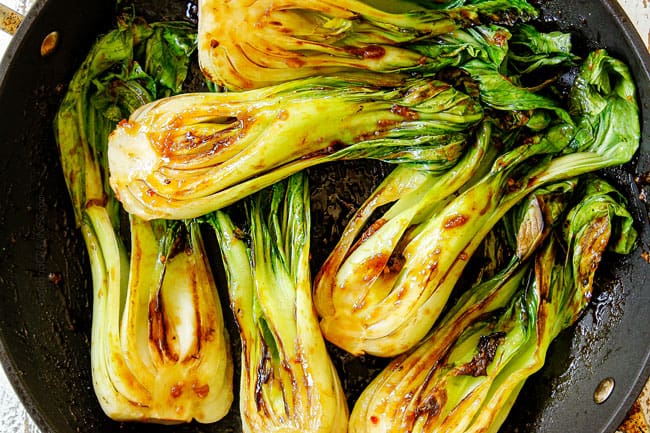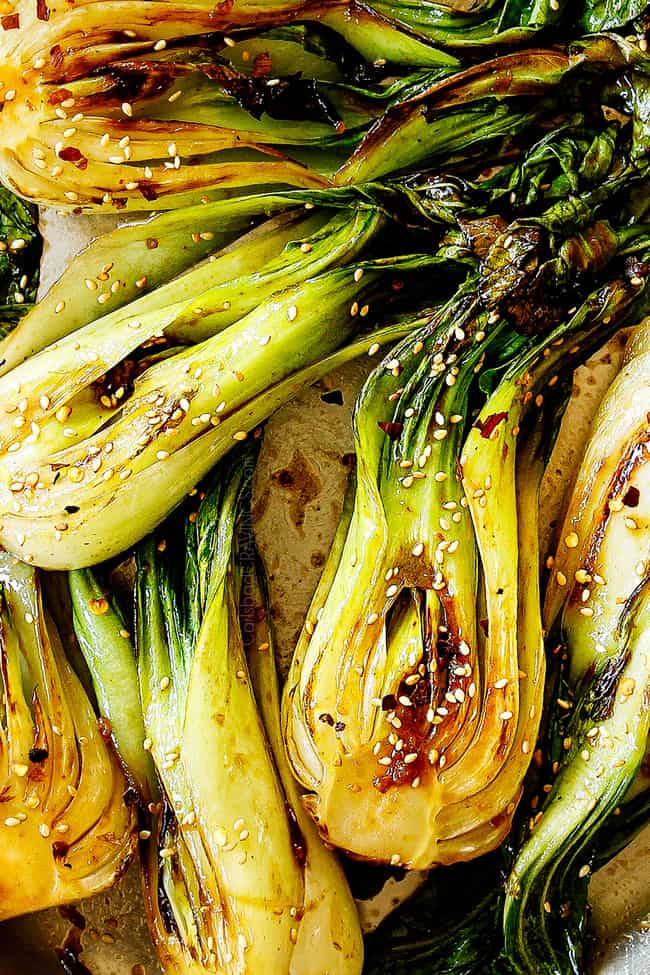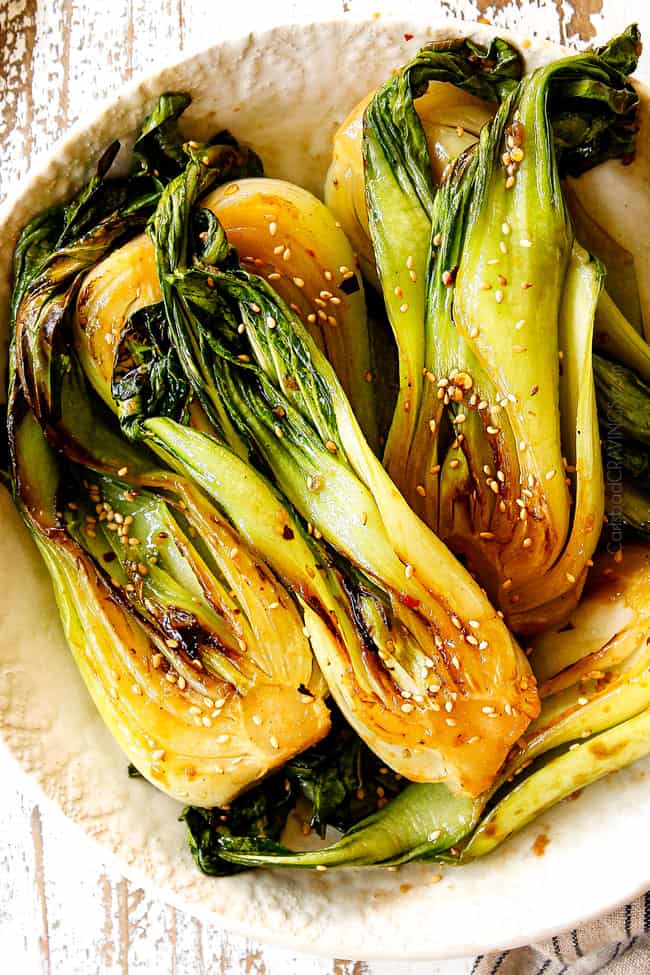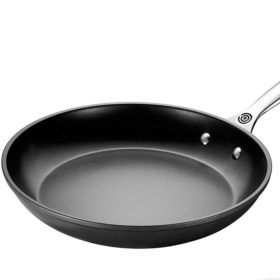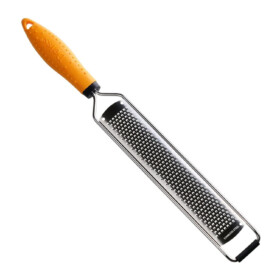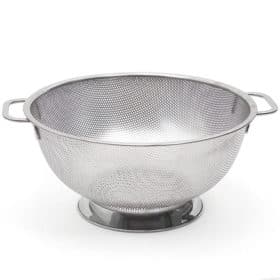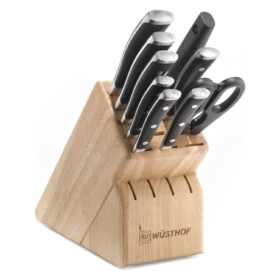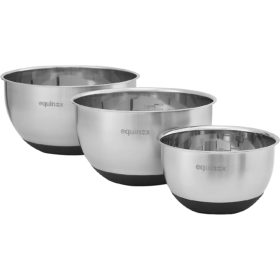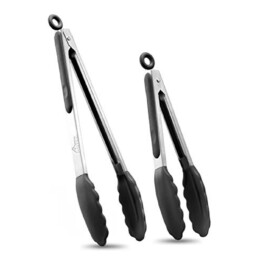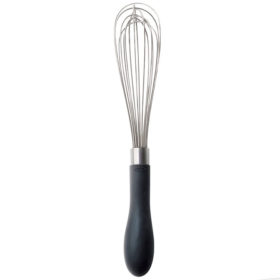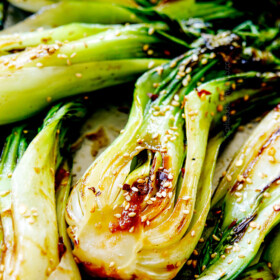Goes with practically every Asian dish or you can swap out the sauce for lemon and garlic and serve it with non-Asian dishes as well. Is crazy flavorful as written but is also flexible; amp up or tone down the ginger, garlic and/or red pepper flakes. Literally takes 10 minutes to make – 5 to prep and 5 to cook. Is a nutritious powerhouse, boasting fiber, vitamins and beta-carotene.
Toasted sesame oil: adds an irresistible, subtle nutty flavor. Soy sauce: use reduced sodium soy sauce then salt to taste if desired. Rice vinegar: use unseasoned/natural rice vinegar. Asian sweet chili sauce: is not to be confused with Asian Chili sauce/paste without the “sweet.” It is sweet and spicy and packed with flavor from a combination of red chilies, onion, garlic, brown sugar and fish sauce. It can be found in the Asian section of your grocery store. It is sometimes labeled “Thai Sweet Chili Sauce.” Ginger: adds a warm spicy, almost pepper taste. You will need 2 teaspoons fresh or you may substitute with a heaping ½ teaspoon ground in a bind and add it directly to the sauce. Garlic: use more or less depending on your garlic love. You may substitute the fresh garlic with a heaping ½ teaspoon garlic powder in a bind and add it directly to the sauce. Red pepper flakes: optional for a subtle kick. Brown sugar: adds sweetness to balance the soy sauce and vinegar.
If you can only find regular bok choy instead of baby bok choy, you can use that in this recipe by chopping and stir frying. If stir frying, consider adding other vegetables such as onions, carrots, bell peppers or broccoli. You can also add shrimp, chicken or steak. Swap the soy sauce (or part of it) for hoisin, oyster or fish sauce. Swap the garlic for roasted garlic. You may also swap the flavor profile entirely and omit the sauce and in it’s place melt butter, saute garlic and add a splash of lemon juice and a pinch of red pepper flakes.
Thoroughly wash bok choy or else you’ll end up with grit in your recipe. Thoroughly dry bok choy so it can caramelize and doesn’t just steam. Use a nonstick skillet so the sauce doesn’t stick to the pan and burn. Use tongs to add the bok choy to the skillet and flip so you don’ burn yourself! Press bok choy down with tongs to ensure it makes contact with the skillet. It’s okay if the leaves of the bok choy don’t lay in the pan and go up the sides because they take less time cook than the stalks. The cooking time depends on how tender you want the stalks and wilted you want the leaves. Don’t overcook the sauce or the garlic can burn and make the sauce bitter. Whisk the sauce ingredients together first so the bok choy doesn’t have a chance to get cold while you stop and make the sauce. This bok choy recipe is best served warm.
How to Prepare Bok Choy
Bok choy needs to be thoroughly washed before cooking. You will be amazed at how much dirt is hidden in the nooks and crannies, especially in between the stalks, near the base.
Chopped bok choy: if you are going to chop the bok choy, then treat it like you would a head of lettuce and chop it up completely before washing it. To wash, add the chopped bok choy to a bowl of cold water and swish it around to remove all of the dirt, then rinse and drain. I find the easiest way to clean chopped bok choy is to just use a salad spinner and then pat dry. Individual stalks: plunge the separate stalks into a bowl of cold water or rinse each stalk individually. Pat or spin dry with a salad spinner. Whole: place the bok choy in a colander and rinse with cold water, rubbing any grit or dirt from between the leaves. If slicing bok choy lengthwise after washing, take care that the inside is dry too, especially for sauteing like in this recipe so the bok choy can caramelize and not steam.
How to cut bok choy
Large bok choy and baby bok choy can both be chopped, but only baby bok choy can be halved and still cook properly. Here’s how to cut bok choy and baby bok choy:
Large bok choy:
Large bok choy is typically chopped and treated as two separate vegetables – the stalks and the leaves because the stalks take much longer to cook. This means you’ll want to separate the greens from the whites when you chop.
To start, chop off the top leafy green section. Stack the leaves on top of each other and cut crosswise into strips, then back the other direction to create desired size pieces. For the bottom, cut off the root end, about 1-inch from the base. Slice the stalks in half lengthwise, then the other way to create desired size pieces.
baby bok choy
Baby bok choy can be eaten whole, halved lengthwise, chopped or the stalks separated.
Chopped: cut off the root end, about 1-inch from the bottom. Stack the stalks on top of each other and, depending on size, slice in half lengthwise or proceed directly into slicing crosswise. Chopped bok choy is great in stir fries. Cut lengthwise: Slice the bok choy in half lengthwise, from the leaves through the stem. Halved bok choy is great for sautéing, braising, grilling or roasting. Individual stalks: cut off the root end, about 1-inch from the bottom then separate the stalks. Individual stalks are great for stir frying.
Asian main dish proteins. This bok choy recipe requires less than 10 minutes so it’s easy to whip up alongside your favorite Asian main dishes. It’s also cohesive with your main palate and doesn’t kill the vibe. Some of our favorite Asian proteins to serve with bok choy are Asian BBQ Salmon, Asian Caramel Pork, Honey Soy Salmon and Asian Burgers. Asian crockpot favorites. I love making Asian dishes in the crockpot because the slow cooker does all the work! This leaves you free to whip up nutritious, delicious bok choy. Some of our favorite crockpot dishes to serve with bok choy are Mongolian Chicken, Sesame Chicken, Cashew Chicken and Honey Garlic Chicken. Stir fries. Some stir fries are loaded with veggies, some stir fries have minimal veggies. Bok choy is perfect to serve alongside stir fries with minimal veggie such as Beef Bulgogi, Orange Chicken, Szechuan Beef, General Tso’s Chicken and Kung Pao Shrimp.
How to Store bok choy (fresh)
Store bok choy in a loose plastic bag in the vegetable drawer of your refrigerator for up to 5 days. Don’t wash the bok choy until you’re ready to cook it or it can mold and wilt prematurely. Recipe adapted from Cook’s Illustrated Tag @CarlsbadCravings and Use #CarlsbadCravngs Leave a Review, I Always Love Hearing From You!



